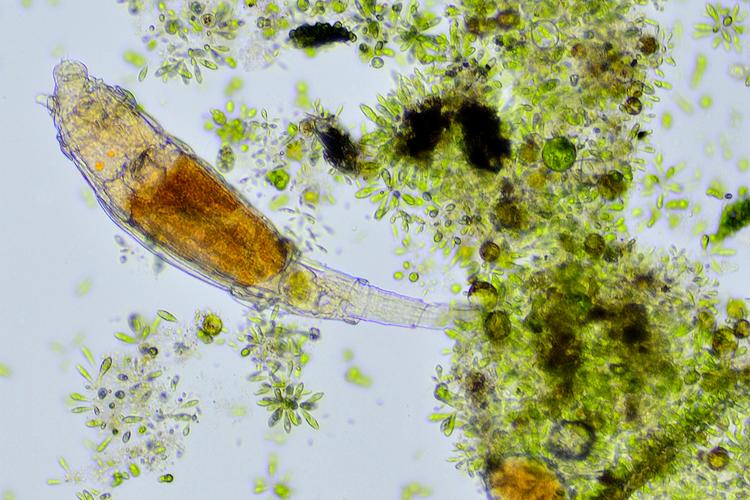In news that’s a lot less sinister than it sounds, but no less exciting, Russian scientists have revived and cloned 24,000-year-old zombies.
Don’t worry—this isn’t a Walking Dead situation. The undead organisms in questions are called bdelloid rotifers, or microscopic “wheel animals” named for their circular mouths surrounded by tiny hairs. Like the more charismatic tardigrade, bdelloid rotifers are extremophiles—organisms that can withstand astonishing conditions like red-hot undersea vents or the vacuum of space.
For this experiment, the scientists went to Siberia and carved off a slice of permafrost, the term for ground that permanently stays frozen. This particular area has been frozen since at least the end of the Pleistocene epoch (2.6 million to 11,700 years ago).
The scientists took the frozen rotifers and thawed them gently, at which point the rotifers began to just live their lives again, including their characteristic asexual reproduction. The secret of the rotifers’ success is a state of suspended animation called cryptobiosis.
“They suspend their metabolism and accumulate certain compounds like chaperone proteins that help them to recover from cryptobiosis when the conditions improve,” lead author Stas Malavin, a researcher at Russia’s Institute of Physicochemical and Biological Problems in Soil Science told Live Science.

Cryptobiosis is critical, because organisms with this capacity go into the special sleep state that’s required to be revived later. Think about animals that prepare for hibernation versus ones that just accidentally took a nap. The preparation is key to successfully waking back up.
To study the rotifers, the scientists dug down to 11.5 feet to extract an intact sample of soil, which was about 24,000 years old, according to carbon dating. After letting the soil thaw with a special medium to help wake the rotifers, the scientists quickly lost track of which microscopic creatures were old and which were the new offspring, because the rotifers reproduce by creating exact clones of themselves asexually.
Researching cryptobiosis in creatures like the rotifers helps further the field of cryobiology—the study of living things at very low temperatures—in general, Malavin told Live Science. Yes, hypothetically, this could lead to similar technology for humans. But that idea is an extremely long way off, because humans are decidedly more complex than tiny, relatively simple rotifers and other extremophile organisms.
The rotifers join a lineup of revived, long-frozen organisms that includes moss, weeds, and tiny worms called nematodes. Scientists brought each organism back to life after at least 1,000 years of frozen quietude. In the future, hardier plants with cryptobiotic properties could change everything from farming to storage, and perhaps even make the journey with humans to Mars.
For now, though, we merely have some brand-new, microscopic worms running off copies of themselves on the Xerox machine. And that’s still pretty cool.









